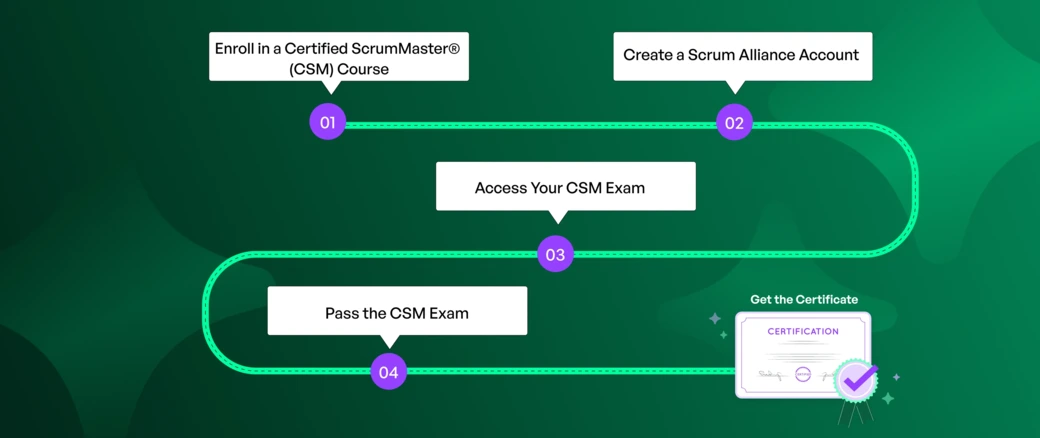The CSM learning objectives offer a perspective on the terminologies and concepts of Agile and Scrum. Core CSM learning objectives ensures the optimum outcome of the training. Besides making you theoretically ready, it helps to apply the principles in real-time.
An Overview of CSM Learning Objectives
Agile, Scrum, and Lean Methodology and Principles
Understand the changes in and the roots of lean methodology, along with the Kaizen method. The relation between the seven lean manufacturing wastes and product development wastes are also explained. You learn the link between features in Agile engineering methods and lean practices.
Also Read: Sprint retrospective process importance methodologies
CSM Learning Objectives for Agile Facilitation
A facilitator conducts collaborations within an organization. It deals with concepts of conducting agile meetings to yield better outcomes.
Get an idea of the viable options for open discussions. Also, learn about the written ideas, dialogue in group discussions or pairs along with their associated advantages.
Harness the Power of Data: Learn About Key Scrum Metrics Today!
Agile Coaching To Meet CSM Learning Objectives
An agile coach teaches agile methodology to the members and oversees the development and creation of agile teams. Part of this guidance often involves steps taken during the Zero Sprint in Agile phase - essential groundwork for initiating an effective Scrum environment. As one of the vital CSM learning objectives, it involves understanding a coaching agreement structure.
It also includes coaching assumptions' fundamentals and psychological ideas involved in deciphering and transforming individual behaviours.
Read More: Product Owner and Scrum Master Can be the Same Person
Services towards Development Teams
This is one of the CSM learning objectives that teaches you the process of building, motivating and increasing the teams for agile development. It has three learning categories.
• Team Effectiveness and Dynamics:
It covers various models such as Team Performance Curve and Tuckman Model for developing the agile teams. The techniques for addressing inter-team disruptions are also discussed. You'll understand the reasons why agile teams work better than traditional ones.
Also Read: Scrum Master Interview Questions
• Team Craftsmanship:
It includes methods for increasing the talents of the agile group.
Also Read: 10 Reasons To Do Scrum Master Certification
• Coaching Development Team Members:
You will know how to set up coaching modules, enforce legalities, set goals, and successfully execute goals.
Also Read: Scrum Master Checklist
Services towards Product Owners
Here you will understand the techniques of using your skills and information among the stakeholders and owners of the products. The product owners define the idea behind the product and its features.
Also Read: Scrum Master Role in Canada manufacturing industry
This is one of the CSM learning objectives that teaches you how to move information from the vision of the product owner to an actual workable product made by the development teams.
Services towards the Organizations
These CSM learning objectives cover two significant aspects:
Also read: CSM Certification cost
• Organizational Development:
The nature of the complicated systems, such as cause-and-effect situations is defined. It also emphasizes managing disagreements and uncertainty.
Also Read: Agile and Scrum in HealthCare Australia
• Scaling:
It involves learning successful enforcement of collaboration between scrum teams.
Read More: Descriptive and Inferential Statistics
Conclusion
The agile framework of Scrum focuses on improving organizational productivity and creating innovation. Thus, being a member of a highly skilled and certified scrum team makes you an integral part of the success of the agile projects, and CSM learning objectives guides you towards that path. You can enrol to CSM certification to get better understanding of CSM learning objectives. and know about scrum artfacts and Scrum master salary of Experienced and Freshers people.















